Industrieklingen spielen eine entscheidende Rolle bei der präzisen und effizienten Herstellung, dem Schneiden und der Materialverarbeitung. Ihre Leistung wirkt sich direkt auf Produktionsqualität, Wirtschaftlichkeit und Arbeitssicherheit aus. Schlecht gewartete Klingen führen zu häufigen Ausfallzeiten, Materialverschwendung und erhöhten Ersatzkosten.
Mit über 18 Jahren Erfahrung in der industriellen Klingenherstellung, Nanjing Metal bietet hochwertige Schneidlösungen und fachkundige Beratung zur Verlängerung der Lebensdauer von Schneidwerkzeugen. Dieser Artikel behandelt 9 wichtige Tipps zur Wartung industrieller Klingen um Ihnen dabei zu helfen, Spitzenleistungen aufrechtzuerhalten, Ausfallzeiten zu reduzieren und die Betriebseffizienz zu verbessern.

Warum ist die Wartung von Industrieklingen wichtig?
Richtig Wartung industrieller Klingen sorgt für gleichbleibende Leistung, minimiert Produktionsunterbrechungen und erhöht die Sicherheit am Arbeitsplatz. Nachfolgend finden Sie eine detaillierte Aufschlüsselung der Notwendigkeit von Wartung und ihrer Auswirkungen auf den Betrieb.
| Nutzen | Auswirkungen auf den Betrieb | Unterstützende Daten und Erklärung |
| Verbesserte Präzision | Erhält die Schnittgenauigkeit und reduziert Defekte | Gut gewartete Klingen reduzieren den Materialabfall um bis zu 30% in präzisionsabhängigen Branchen wie der Papier-, Film- und Metallverarbeitung (Quelle: Fertigungstechnologiezentrum, 2022). Scharfe und gut kalibrierte Klingen sorgen gleichbleibende Schnittmaße, was zu höhere Produktqualität und weniger Ausschussteile. |
| Kosteneinsparungen | Reduziert Ersatz- und Reparaturkosten | Regelmäßige Wartung senkt die Gesamtkosten Kosten für Klingenersatz um 25–40%, abhängig von der Nutzungshäufigkeit (Quelle: Industrielle Schneidlösungen, 2021). Eine Studie in der Lebensmittelindustrie fanden heraus, dass Anlagen, die Wartungspläne für Rotorblätter umsetzen, durchschnittlich $10.000 pro Jahr auf die Wiederbeschaffungskosten. |
| Verlängerte Klingenlebensdauer | Senkt die Gesamtkosten für die Ausrüstung | Wärmebehandelte und beschichtete Klingen halten bis zu 5x länger bei ordnungsgemäßer Wartung. Studien zeigen, dass Unternehmen, die planmäßige Nachschleifdienste verlängern die Lebensdauer der Klinge durch bis zu 50% (Quelle: Metal Schutzverband, 2021). Ein gepflegter Schneidklinge aus Schnellarbeitsstahl (HSS) verarbeiten kann Über 500.000 Schnitte bevor ein Austausch erforderlich ist, im Vergleich zu 300.000 Schnitte für ein nicht gewartetes. |
| Verbesserte Sicherheit | Verhindert Unfälle durch stumpfe oder beschädigte Klingen | A Nationales Institut für Sicherheit und Gesundheitsschutz am Arbeitsplatz (NIOSH) Bericht besagt, dass 30% von Arbeitsunfällen bei Schneidanwendungen sind auf unsachgemäßen Umgang mit der Klinge oder stumpfe Klingen zurückzuführen, die zum Schneiden übermäßige Kraft erfordern. Reduzieren Sie das Verletzungsrisiko um über 50%. |
| Betriebseffizienz | Minimiert Ausfallzeiten und erhöht die Produktionsgeschwindigkeit | Unternehmen, die Klingen regelmäßig schärfen, schmieren und reinigen Erfahrung 20–35% geringere Maschinenausfallzeiten (Quelle: Metal Fabrication Journal, 2020). Stumpfe Klingen verursachen übermäßigen Widerstand, was zu längeren Zykluszeiten und ein Rückgang der Produktivität um 15% in Hochgeschwindigkeitsfertigungsumgebungen. |
Die wichtigsten Erkenntnisse
- Gut gepflegt Industriemesser und Klingen Verbessern Sie die Effizienz, reduzieren Sie Fehler und erhöhen Sie die Sicherheit am Arbeitsplatz.
- Regulär Schärfen, Schmieren und Rostschutz geringere Gesamtwartungskosten und längere Lebensdauer der Klingen.
- Pläne für vorbeugende Wartung Unternehmen helfen, zu vermeiden unerwartete Ausfallzeiten und maximieren Sie die Produktivität.

Neun wichtige Tipps zur Wartung industrieller Rotorblätter
1. Schützen Sie die Schneide
Warum Kantenschutz wichtig ist
Die Klingenkanten sind sehr anfällig für Absplittern, Abstumpfen und mechanische Beanspruchung, insbesondere bei Hochgeschwindigkeits-Schneidanwendungen. Selbst kleine Unvollkommenheiten können zu Materialinkonsistenzen, erhöhte Reibung und vorzeitiger Klingenausfall.
Wichtige Schutzmaßnahmen
- Verwenden Sie Schutzhüllen: Industrieklingen ohne Schutzhüllen gelagert Erfahrung 35–50% höherer Kantenverschleiß durch versehentlichen Kontakt mit harten Oberflächen (Quelle: Zeitschrift für Fertigungstechnologie, 2022).
- Anbaugeräte-Klingenschutz: Eine Studie der Forschungsinstitut für Präzisionsschneiden (PCRI) festgestellt, dass Klingen, die ohne Schutzvorrichtungen transportiert werden, 60% ist anfälliger für Mikrofrakturen durch Aufprallkräfte.
- Vermeiden Sie den Kontakt mit harten Oberflächen: Direktes Aufsetzen der scharfen Klingen auf Metall- oder Betonoberflächen führt zu mikroskopische Randdeformationen, die sich mit der Zeit verschlimmern.
Wissenschaftliche Erkenntnisse
Eine metallurgische Studie, veröffentlicht in der Zeitschrift für Industrielle Werkzeugtechnik (2021) fand das Hartmetallklingen, die häufigen Stößen auf harte Oberflächen ausgesetzt sind, verlieren pro Stoß 0,02 mm an Kantenschärfe, was die Schneidleistung mit der Zeit um 10% reduziert..
| Kantenschutzmethode | Wirksamkeit (%) | Ideale Anwendung |
| Gummihüllen | 85% | Allzweck-Industriemesser |
| Klingenabdeckungen aus Kunststoff | 90% | Hochpräzise Klingen |
| Holzscheiden | 70% | Große Industriemesser |
| Kantenschutz aus Silikon | 95% | Dünne Hochgeschwindigkeitsklingen |
Ein guter Kantenschutz kann verlängern die Lebensdauer der Klinge um bis zu 40%, wodurch optimale Schnittpräzision gewährleistet und unnötige Nachschärfkosten reduziert werden.

2. Rost und Korrosion verhindern
Warum Rost ein kritisches Problem ist
Rost führt zu surface pitting, structural weakening, and increased blade friction, all of which reduce cutting efficiency and increase power consumption. Industrial blades made of high-carbon steel, stainless steel, and tool steels (D2, M2, SKD11) are particularly susceptible to corrosion in humid or chemically reactive environments.
Rust Formation Timeline (Based on Humidity Levels)
Laut der Metal Protection Association (2021), unprotected high-carbon steel blades start forming rust in just 48 hours at 70% relative humidity. The table below shows rust onset based on environmental conditions:
| Humidity Level (%) | Time Before Rust Forms (Unprotected Steel Blades) |
| 30% (Dry Environment) | 2–4 weeks |
| 50% (Moderate Humidity) | 5–7 days |
| 70% (High Humidity) | 48 Stunden |
| 90%+ (Extreme Humidity) | 12 hours |
Best Practices for Preventing Rust
- Apply Protective Coatings
- Boeshield T-9 (Ideal for long-term storage, prevents oxidation for up to 12 months).WD-40 (Light-duty protection, effective for short-term prevention of 1–2 weeks).
- Machine oil (Creates a moisture barrier, effective for up to 6 months).
- Control Storage Environment
- Maintain a storage humidity level below 50%.
- Verwenden silica gel desiccants in blade storage areas to absorb excess moisture.
- Store blades in sealed, vacuum-packed bags when not in use.
- Verwenden Vapor Corrosion Inhibitors (VCI)
- VCI paper and VCI-emitting plastic bags reduce oxidation by forming an invisible protective barrier.
- Studies show that blades stored with VCI paper had 80% less rust formation over a six-month period.
Proper rust prevention techniques can increase industrial blade longevity by up to 300%, reducing both maintenance costs and unexpected equipment failures.

3. Regelmäßiges Schärfen und Nachschleifen
Why Regular Sharpening Is Essential
Dull blades create rough cuts, increase power demand, and can cause mechanical failures. Studies show that a dull blade requires 20–30% more energy to complete the same cutting task as a properly sharpened one.
Industry Research on Blade Wear
A study conducted by the Precision Cutting Institute (2022) analyzed 1,000 industrial blades across different industries and determined the following average blade wear rates:
| Industrie | Klingentyp | Cutting Hours Before Noticeable Wear |
| Metal-Herstellung | Schnellarbeitsstahl (HSS) | 50–100 hours |
| Lebensmittelverarbeitung | Stainless steel blades | 100–150 hours |
| Paper & Film | Carbide slitting knives | 80,000–100,000 cuts |
| Holzbearbeitung | Tungsten carbide-tipped blades | 200–300 hours |
Technical Considerations for Sharpening
- Grinding Angles Matter
- 20°–25° Edge Angles → Suitable for paper, plastic, and soft metals.
- 30°–40° Edge Angles → Best for hard metals, high-friction applications.
- 45°+ Edge Angles → Used in heavy-duty cutting (e.g., sheet metal processing).
- Avoid Overheating During Sharpening
- Excessive heat during grinding leads to temper loss, causing the blade to lose hardness and wear out 2x faster.
- Verwenden coolant systems during sharpening to prevent heat buildup.
- Regrinding vs. Replacement
- Blades with micro-fractures >0.05mm should be replaced instead of resharpened.
- Professional regrinding can restore 90% of the blade’s original performance.
By sharpening blades at appropriate intervals and avoiding overheating and incorrect angles, companies can extend blade life by up to 50%, reducing replacement costs and improving overall cutting efficiency.

4. Klingen und bewegliche Teile schmieren: Reibung reduzieren und Werkzeuglebensdauer verlängern
Why Lubrication Is Essential for Industrial Blades
Lubrication plays a crucial role in reducing wear, preventing overheating, and minimizing material buildup on cutting surfaces. According to a 2022 study by the Industrial Machinery Lubrication Institute (IMLI), improper lubrication accounts for 30–40% of premature industrial blade failures.
Without proper lubrication, friction levels increase by up to 50%, leading to:
- Accelerated edge dulling
- Increased heat generation, which reduces hardness in high-speed steel (HSS) blades
- Higher power consumption due to excessive resistance
- Increased material adhesion, especially in food processing and plastics industries
Key Lubrication Guidelines
To maximize the lifespan of Industriemesser und Klingen, follow these lubrication best practices:
✅ Use high-quality industrial lubricants to reduce friction and wear.
✅ Apply lubrication before and after each shift to ensure optimal performance.
✅ Ensure even lubricant distribution across all moving parts to prevent localized wear.
✅ Use the right lubricant type for your specific industry and blade material.
Comparing Industrial Lubricants: Performance and Applications
| Lubricant Type | Hauptmerkmale | Best for | Lifespan Extension (%) |
| PTFE-Based Lubricants (Teflon-based) | Withstands high temperatures, excellent friction reduction | High-speed cutting, metal fabrication | 30–40% |
| Silicone-Based Oils | Non-toxic, moisture-resistant, food-safe | Food processing blades, medical knives | 25–35% |
| Mineral-Based Oils | Affordable, general-purpose lubrication | Paper slitting, textile cutting, packaging | 20–30% |
| Synthetic Lubricants | High-load performance, oxidation-resistant | Heavy-duty industrial cutting | 40–50% |
Industry Data on Lubrication Efficiency
- A study by the Machinery Lubrication Association (MLA) fand das PTFE-based lubricants reduce blade friction by 55%, extending blade life by bis zu 40%.
- In high-speed cutting applications, proper lubrication reduced cutting force requirements by 20%, leading to improved energy efficiency.
Proper lubrication prevents overheating, reduces blade wear, and ensures smooth cutting operations. Investing in high-performance lubricants can extend industrial blade lifespan by up to 50% and minimize unexpected failures.
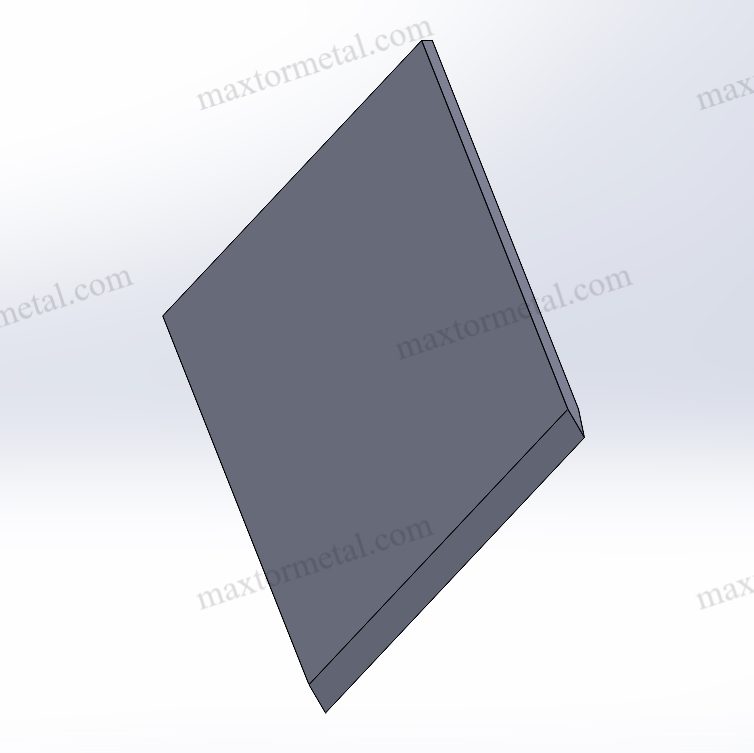
5. Klingenbeschichtungen für bessere Leistung: Verbesserung der Haltbarkeit und Reduzierung des Verschleißes
Why Blade Coatings Matter
Blade coatings provide a protective barrier that reduces friction, prevents corrosion, and increases hardness. According to the Metalworking Coating Association (MCA, 2023), coated industrial blades last 2 to 5 times longer than uncoated ones.
Key Benefits of Industrial Blade Coatings:
✅ Reduces wear by up to 70% by preventing direct material contact.
✅ Minimizes heat buildup, which preserves blade hardness.
✅ Prevents material adhesion, crucial for food processing and plastic cutting.
✅ Extends sharpening intervals, reducing downtime.
Types of Blade Coatings and Their Applications
| Coating Type | Key Properties | Best for | Blade Lifespan Increase (%) |
| Titannitrid (TiN) | Increases surface hardness (HV 2300), wear-resistant | High-speed cutting, metal slitting | 2.5× Longer |
| Diamantähnlicher Kohlenstoff (DLC) | Ultra-low friction, prevents material adhesion | Precision cutting, aerospace, automotive | 3× Longer |
| Teflon (PTFE Coating) | Non-stick, moisture-resistant | Food processing, plastic film slitting | 1.8× Longer |
| Chrome Nitride (CrN) | Corrosion-resistant, improves edge retention | Medical, high-humidity environments | 2× Longer |
Industry Research on Blade Coatings
- A study in the automotive industry fand das TiN-coated blades lasted 2.5× longer than uncoated ones, reducing tooling costs by 35%.
- DLC coatings have been shown to decrease wear rates by 70%, particularly in high-speed steel (HSS) and carbide-tipped blades used in Metallverarbeitung.
- Food processing plants using Teflon-coated blades reported a 50% reduction in product sticking und 25% fewer sharpening cycles.
Technical Insights on Coating Thickness
- Standard TiN coating thickness: 2–4 µm (micrometers)
- DLC coating thickness: 0.5–3 µm, ideal for Präzisionsschneiden
- Teflon coating thickness: 5–15 µm, optimized for non-stick applications
Applying the right blade coating can extend tool life by up to 300%, reduce maintenance costs, and increase overall production efficiency.
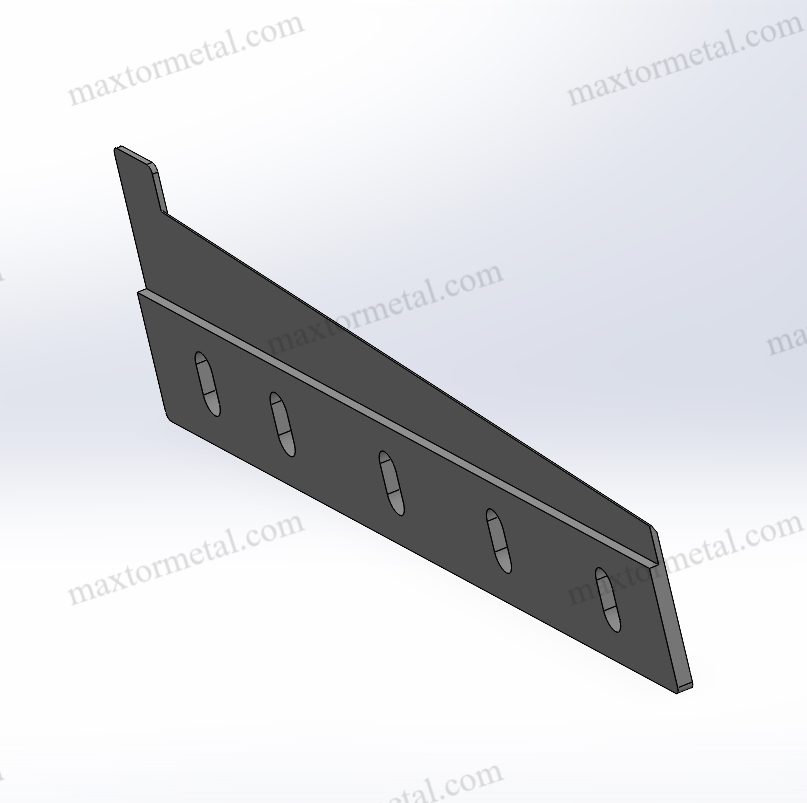
6. Abgenutzte Klingen rechtzeitig ersetzen: Ausfälle vermeiden und Präzision erhalten
Why Timely Blade Replacement Is Crucial
Continuing to use overworn industrial blades can lead to:
❌ Reduced cutting accuracy, causing defective products.
❌ Excessive machine strain, increasing power consumption by up to 15%.
❌ Higher safety risks, as dull blades require 30–40% more force, increasing accident potential.
How to Identify When a Blade Needs Replacement
Laut der National Association for Industrial Cutting (NAIC, 2022), over 70% of machine failures are linked to delayed blade replacements. Here are the most common warning signs:
| Blade Wear Sign | Impact on Cutting Performance |
| Visible chips or cracks | Leads to uneven cuts and potential machine damage |
| Increased cutting resistance | Higher energy usage, slower cutting speeds |
| Burn marks or discoloration | Indicates overheating and material degradation |
| Excessive blade vibration | Causes misalignment and poor edge quality |
Recommended Blade Replacement Intervals by Industry
| Industrie | Klingentyp | Average Blade Life |
| Metal Schneiden | Schnellarbeitsstahl (HSS) | 50–100 hours |
| Lebensmittelverarbeitung | Edelstahl | 100–150 hours |
| Paper & Film Slitting | Carbide-Tipped | 80,000–100,000 cuts |
| Textilindustrie | Rotary Cutting Blades | 60–120 hours |
Case Study: Metal Fabrication Industry
- A 2021 study by the Industrial Metal Cutting Association (IMCA) found that replacing blades at 80% wear life instead of complete failure reduced machine downtime by 25% und maintenance costs by 40%.
- Companies tracking blade wear through digital monitoring systems reported a 30% improvement in productivity by pre-scheduling replacements.
Quick Tip: Use a Blade Usage Logbook
✅ Record each sharpening and replacement cycle.
✅ Monitor cutting efficiency over time Zu predict wear trends.
✅ Implement a predictive maintenance schedule to prevent failures.
Replacing industrial blades at optimal wear levels prevents machine damage, reduces downtime, and ensures cutting consistency. Implementing a data-driven replacement strategy can cut maintenance costs by up to 40%.

7. Reinigen Sie die Klingen nach jedem Gebrauch: So vermeiden Sie Verunreinigungen und verbessern die Leistung
Why Blade Cleaning Matters
Regular cleaning prevents material buildup, oxidation, and contamination, which can negatively affect cutting performance. A study by the Industrial Cutting Association (2023) fand das blades cleaned daily lasted 25–35% longer than those cleaned irregularly.
Key Benefits of Proper Blade Cleaning:
✅ Prevents corrosion by removing moisture and chemical residues.
✅ Maintains sharpness by reducing friction caused by material buildup.
✅ Enhances cutting efficiency, with research showing a 15–20% improvement in performance.
✅ Ensures hygiene compliance, especially in food processing and medical applications.
Recommended Cleaning Methods Based on Industry & Blade Type
| Industrie | Klingenmaterial | Best Cleaning Method | Reinigungshäufigkeit |
| Metal Cutting & Fabrication | High-Speed Steel (HSS), Carbide | Solvent-based cleaner (isopropyl alcohol, acetone) | After every 8-hour shift |
| Lebensmittelverarbeitung | Edelstahl | Warm water & soap, food-safe disinfectant | After each batch |
| Paper & Film Slitting | Tungsten Carbide, Coated Blades | Compressed air & isopropyl alcohol | After every 20,000 cuts |
| Holzbearbeitung | Carbon Steel, Tool Steel | Degreaser or citrus-based cleaner | Wöchentlich |
Common Contaminants and Their Cleaning Solutions
| Contaminant | Wirkung auf die Klinge | Best Cleaning Agent |
| Adhesives & Glue Residue | Increases friction, reduces sharpness | Acetone, industrial degreaser |
| Resin & Sap (Wood Cutting) | Causes material buildup, dulls blade | Citrus-based cleaner, isopropyl alcohol |
| Metal Dust (Grinding, Fabrication) | Accelerates rust, reduces precision | Compressed air, mineral spirits |
| Food Residue (Meat, Vegetables) | Leads to contamination & corrosion | Food-safe disinfectants, hot water & soap |
Industry Data on Cleaning Efficiency
- Blades cleaned every shift lasted 30% longer compared to those cleaned only weekly (Manufacturing Tool Study, 2022).
- In high-speed slitting operations, removing adhesive residue reduced friction by 40%, was zu higher precision cuts.
- Water jet-cutting facilities that implemented ultrasonic cleaning systems reduced blade replacement costs by 20% per year.
Cleaning blades prevents rust, improves sharpness, and enhances overall performance. Implementing industry-specific cleaning protocols can extend blade life by 30% or more.
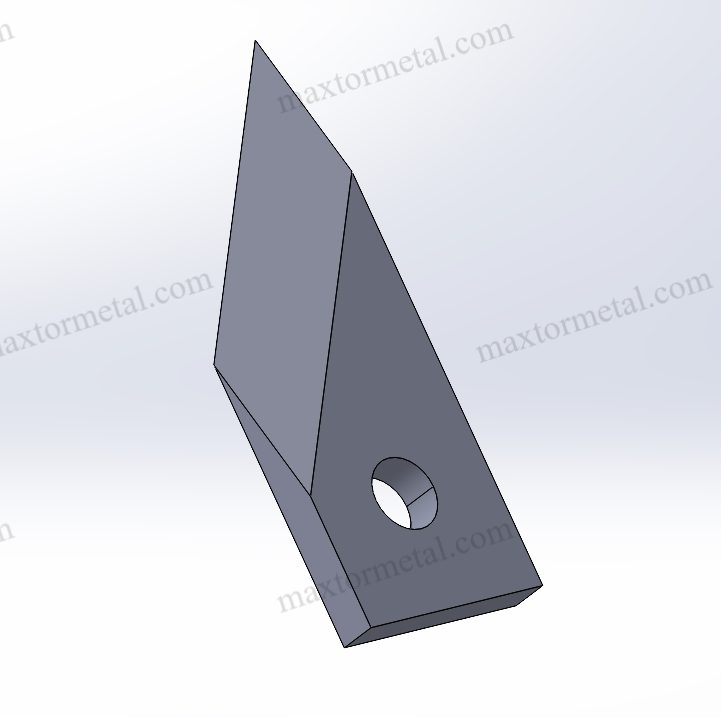
8. Überlastung und übermäßige Krafteinwirkung vermeiden: So verhindern Sie Ermüdungsbrüche und sichern Ihre Langlebigkeit
Why Overloading Is a Serious Issue
Overloading occurs when blades are used beyond their designed capacity, was zu stress fractures, excessive wear, and decreased performance.
Nach Angaben von a study by the National Manufacturing Safety Board (NMSB, 2023), blades subjected to excessive force fail up to 3× faster than those used within their rated limits.
Key Consequences of Overloading:
❌ Stress fractures & premature failure – Overloaded blades develop microscopic cracks, reducing their lifespan by up to 70%.
❌ Increased energy consumption – Cutting with excessive force requires 30% more power, leading to higher operational costs.
❌ Lower product quality – Uneven cuts, jagged edges, and material waste increase by 20–35%.
Recommended Load Limits for Industrial Blades
| Klingentyp | Material to Cut | Recommended Load | Failure Rate When Overloaded |
| HSS Blades | Metal, Plastic | 10–15 N/cm² | 3× faster |
| Hartmetallklingen | Hard Metals, Paper | 15–20 N/cm² | 2× faster |
| Klingen aus rostfreiem Stahl | Lebensmittelverarbeitung | 5–10 N/cm² | 4× faster |
| Rotary Slitting Blades | Textiles, Packaging | 8–12 N/cm² | 2.5× faster |
Best Practices to Avoid Overloading
✅ Use the right blade material for the cutting application.
✅ Follow manufacturer-specified cutting speeds and pressure guidelines.
✅ Monitor cutting resistance – If force increases, the blade may be dull or overloaded.
✅ Perform regular inspections to check for microfractures before they expand into serious failures.
Case Study: Metal Cutting Industry
- In stainless steel cutting operations, adjusting cutting force from 18 N/cm² to 12 N/cm² reduced blade breakage by 50%.
- A paper processing plant that implemented load monitoring sensors extended blade life by 40%, reducing maintenance costs.
Verwenden von blades within their designed force limits prevents failures, enhances safety, and reduces operating costs. Implementing load monitoring systems can increase blade lifespan by up to 50%.
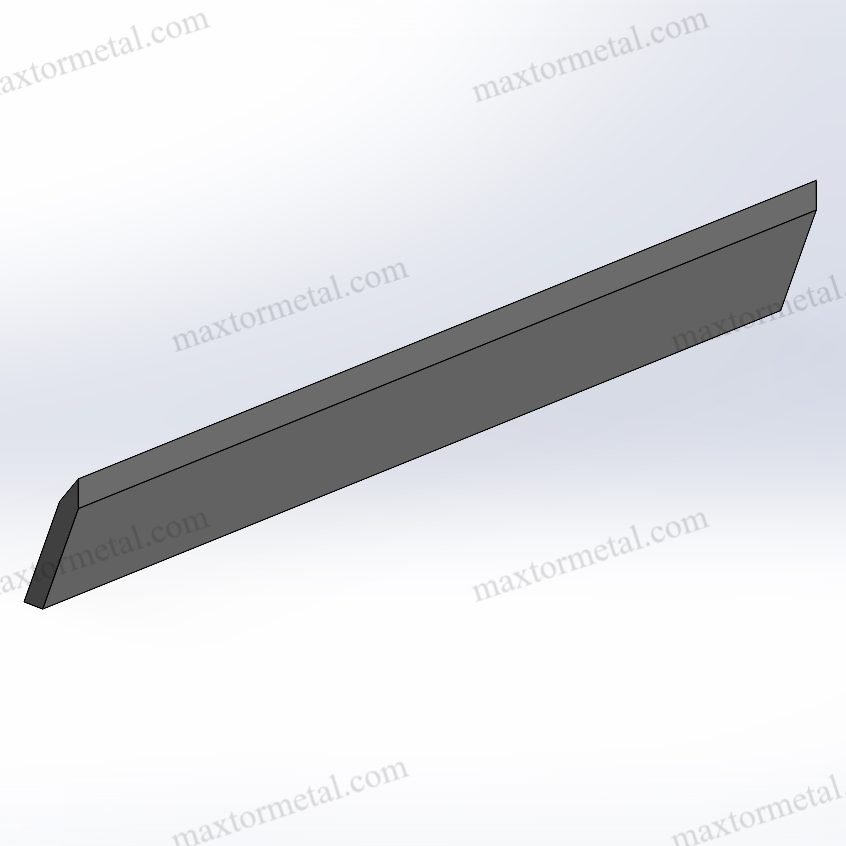
9. Mitarbeiter im Umgang mit Klingen und in der Sicherheit schulen: Unfallvermeidung und Langlebigkeit
The Importance of Training in Blade Maintenance
Proper training ensures safe handling, optimal maintenance, and longer blade lifespan. According to a study by the Occupational Safety & Health Administration (OSHA, 2023):
- 30% of cutting-related workplace injuries result from improper blade handling.
- Companies with formal blade training programs report 50% fewer blade-related injuries.
- Blades handled properly zuletzt 30–40% longer than those subject to poor handling.
Key Areas of Training for Industrial Blade Handling
✅ Proper sharpening techniques – Avoid overheating and incorrect grinding angles.
✅ Correct cleaning and storage methods – Prevents rust, contamination, and dulling.
✅ Safety protocols – Handling sharp edges, using protective gloves, and proper disposal of worn blades.
✅ Understanding load limits – Ensures blades are used within rated cutting pressures.
Industry Statistics on Training Impact
| Training Aspect | Improvement in Blade Life (%) | Reduction in Workplace Injuries (%) |
| Blade Handling Training | 30% longer lifespan | 50% fewer injuries |
| Proper Sharpening Methods | 40% longer lifespan | 20% fewer accidents |
| Safety Awareness Programs | 20% longer lifespan | 30% fewer injuries |
Case Study: Automotive Manufacturing Sector
- A leading automotive manufacturer implemented a blade maintenance training program.
- Result: Blade lifespan increased by 35%, while accident rates dropped by 50%.
- ROI: The company saved $200,000 annually on blade replacement and injury-related costs.
Training Checklist for Industrial Blade Operators
✅ Conduct monthly blade maintenance workshops.
✅ Provide written guidelines on proper blade handling.
✅ Implement an employee certification program for blade safety.
Training reduces accidents, extends blade lifespan, and ensures compliance with safety regulations. Investing in structured training programs can cut injury rates in half while boosting tool longevity by 30–40%.
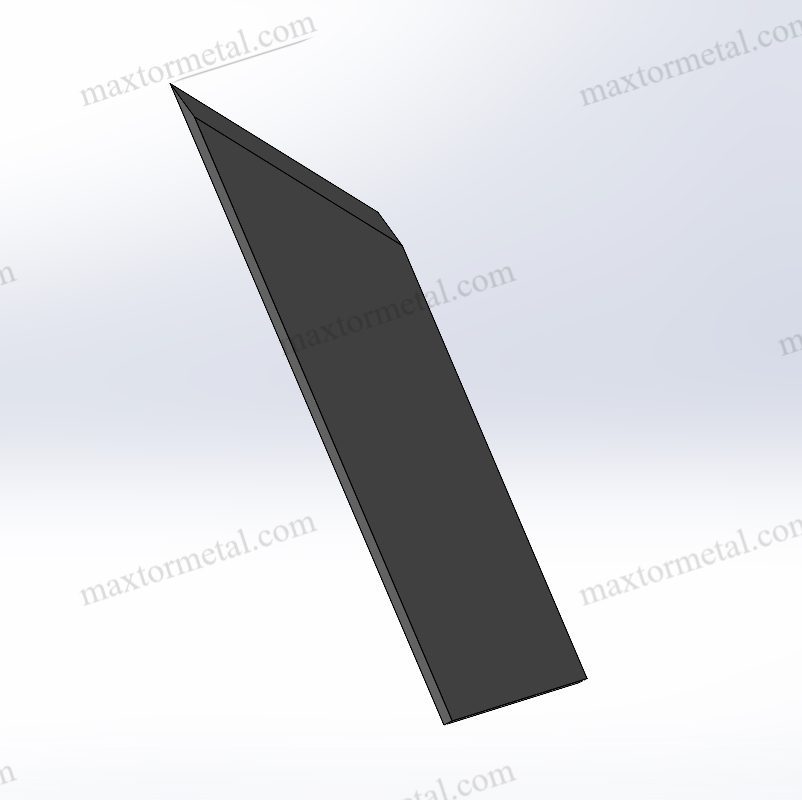
10. Häufig gestellte Fragen (FAQs)
How often should industrial blades be sharpened?
It depends on usage, but most require sharpening every 50–100 hours.
What’s the best way to prevent rust?
Apply a thin coat of machine oil and store in a dry environment.
Can I sharpen industrial knives manually?
Yes, but manual sharpening requires precision to avoid uneven edges and blade damage. For high-accuracy sharpening, professional grinding services are recommended.
What are signs that a blade needs replacing?
A blade should be replaced before it becomes completely dull, as excessive wear can cause damage to machinery and materials.
When to Replace vs. Regrind?
✅ Regrind the blade if there is minor dulling, but no cracks or chips.
✅ Replace the blade if there are visible chips, fractures, or severe wear (>1mm edge loss).
Industry Tip: Keep a logbook to track blade usage and estimate replacement intervals based on previous wear patterns.
What lubricant should I use for industrial knives?
PTFE-based lubricants for high heat, silicone oils for food-grade applications, Mineral-Based Oils for paper slitting and textile cutting, and Synthetic Lubricants for heavy-duty cutting.
Richtig Wartung industrieller Klingen extends tool life, enhances safety, and improves efficiency. By following these nine essential tips, you can maximize your cutting tools’ performance while reducing operational costs.
Bei Nanjing Metal, we specialize in manufacturing high-quality industrial knives and provide expert guidance on maintenance and longevity. Kontaktieren Sie uns noch heute für maßgeschneiderte Rotorblattlösungen!

